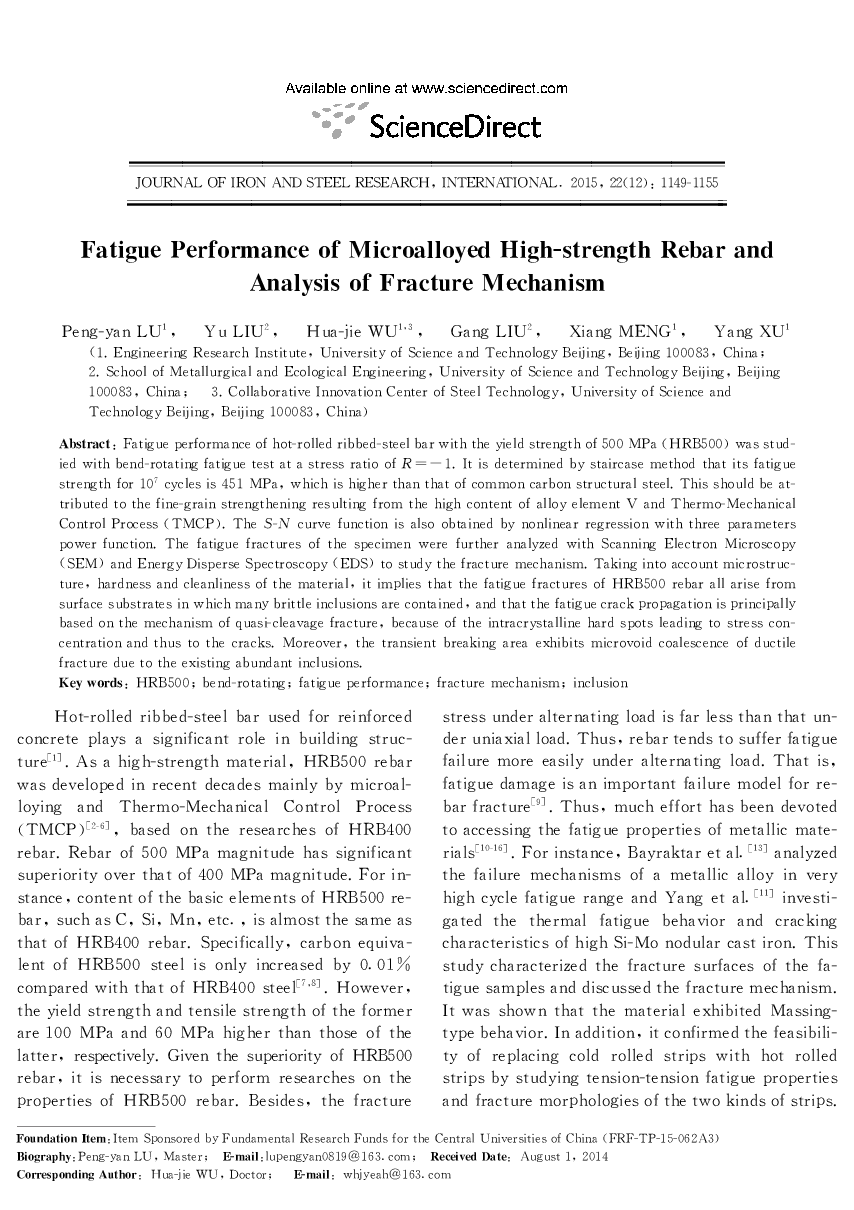| Article ID | Journal | Published Year | Pages | File Type |
|---|---|---|---|---|
| 1628225 | Journal of Iron and Steel Research, International | 2015 | 7 Pages |
Fatigue performance of hot-rolled ribbed-steel bar with the yield strength of 500 MPa (HRB500) was studied with bend-rotating fatigue test at a stress ratio of R = −1. It is determined by staircase method that its fatigue strength for 107 cycles is 451 MPa, which is higher than that of common carbon structural steel. This should be attributed to the fine-grain strengthening resulting from the high content of alloy element V and Thermo-Mechanical Control Process (TMCP). The S-N curve function is also obtained by nonlinear regression with three parameters power function. The fatigue fractures of the specimen were further analyzed with Scanning Electron Microscopy (SEM) and Energy Disperse Spectroscopy (EDS) to study the fracture mechanism. Taking into account microstructure, hardness and cleanliness of the material, it implies that the fatigue fractures of HRB500 rebar all arise from surface substrates in which many brittle inclusions are contained, and that the fatigue crack propagation is principally based on the mechanism of quasi-cleavage fracture, because of the intracrystalline hard spots leading to stress concentration and thus to the cracks. Moreover, the transient breaking area exhibits microvoid coalescence of ductile fracture due to the existing abundant inclusions.
